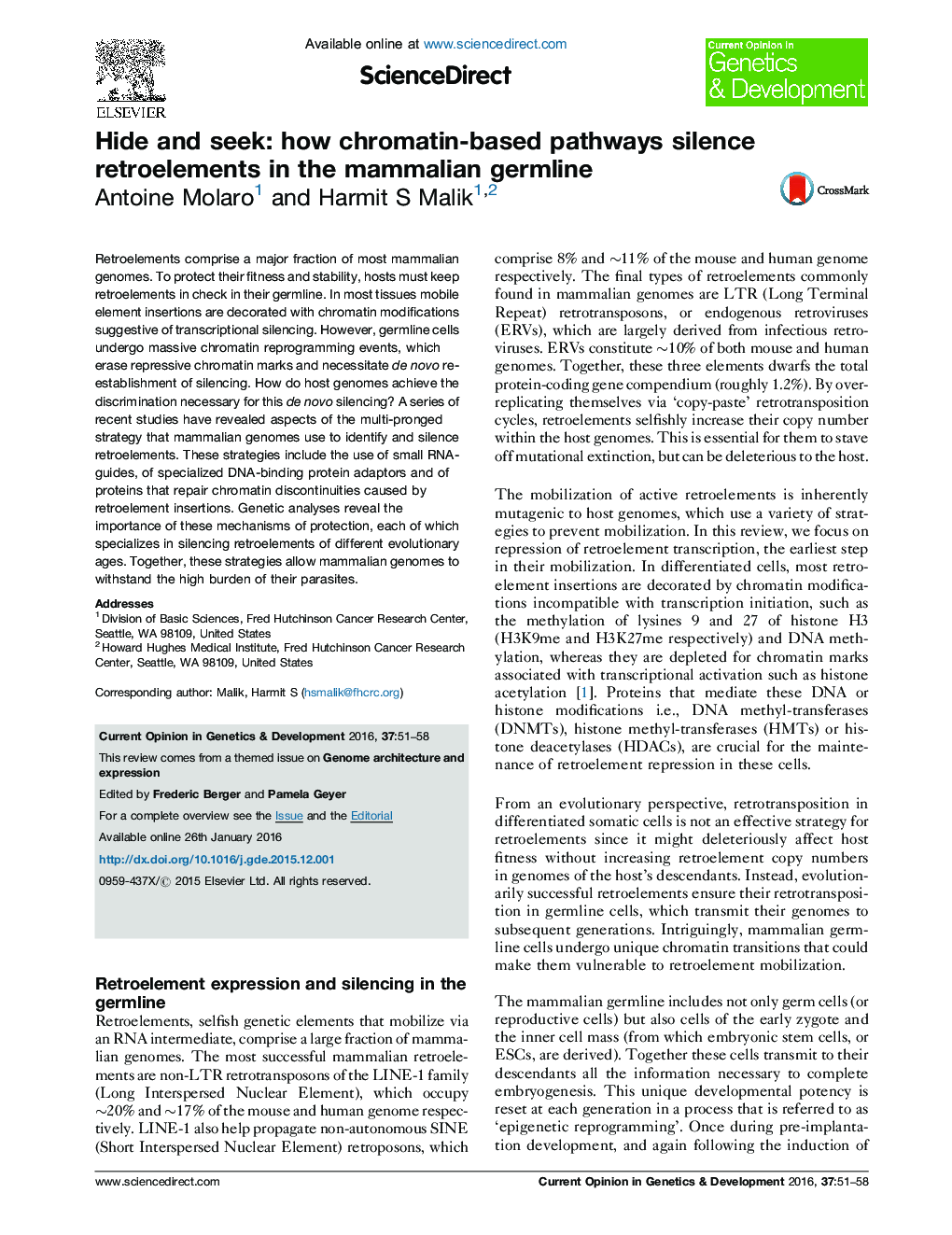| Article ID | Journal | Published Year | Pages | File Type |
|---|---|---|---|---|
| 5893158 | Current Opinion in Genetics & Development | 2016 | 8 Pages |
Retroelements comprise a major fraction of most mammalian genomes. To protect their fitness and stability, hosts must keep retroelements in check in their germline. In most tissues mobile element insertions are decorated with chromatin modifications suggestive of transcriptional silencing. However, germline cells undergo massive chromatin reprogramming events, which erase repressive chromatin marks and necessitate de novo re-establishment of silencing. How do host genomes achieve the discrimination necessary for this de novo silencing? A series of recent studies have revealed aspects of the multi-pronged strategy that mammalian genomes use to identify and silence retroelements. These strategies include the use of small RNA-guides, of specialized DNA-binding protein adaptors and of proteins that repair chromatin discontinuities caused by retroelement insertions. Genetic analyses reveal the importance of these mechanisms of protection, each of which specializes in silencing retroelements of different evolutionary ages. Together, these strategies allow mammalian genomes to withstand the high burden of their parasites.
